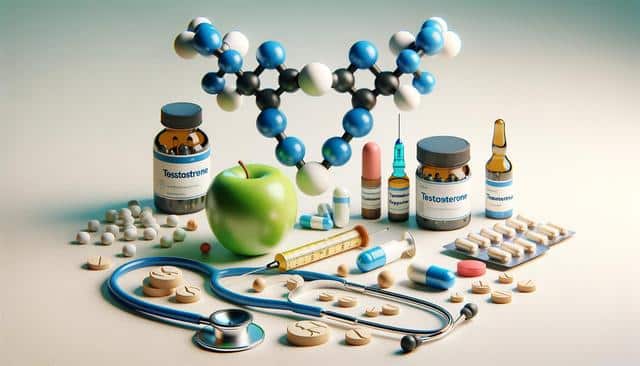
Understanding Testosterone Health and Your Medical Support Options
What Is Testosterone and Why It Matters
Testosterone is a hormone primarily associated with male development, but it plays a significant role in the health of all individuals. It supports various bodily functions such as muscle maintenance, bone density, red blood cell production, and mental well-being. As people age, testosterone levels naturally decline, which can lead to noticeable changes in physical and emotional health. Understanding how testosterone works and recognizing when levels are not within an optimal range can help individuals take steps toward better overall wellness.
Low testosterone—also known as hypogonadism—can manifest through a variety of symptoms. These may include:
- Decreased energy and stamina
- Reduced muscle mass or strength
- Low libido or sexual dysfunction
- Mood swings or feelings of depression
- Difficulty concentrating
While these symptoms can overlap with other health conditions, monitoring testosterone levels through routine blood tests provides a clearer picture. Early detection can help prevent long-term issues and guide appropriate treatment options.
Common Causes of Testosterone Imbalance
There are several factors that can contribute to low testosterone levels. Age is a natural contributor, but lifestyle, environmental influences, and underlying health conditions also play a role. Some of the most common causes include:
- Obesity and poor nutrition
- Chronic stress and poor sleep
- Excessive alcohol or drug use
- Medical conditions like diabetes or thyroid disorders
- Injury or trauma to the testicles
In some cases, testosterone imbalance may be linked to genetic conditions or the use of certain medications. Identifying the root cause is essential for developing a personalized treatment plan. A healthcare provider can help evaluate these contributing factors through a comprehensive health assessment.
Medical Support and Treatment Options
For those diagnosed with low testosterone, a variety of medical support options are available. One of the most recognized treatments is hormone replacement therapy (HRT), which aims to restore hormone levels to a healthy range. HRT can be administered in different forms, such as:
- Injections
- Topical gels or creams
- Patches
- Implantable pellets
Each method has its own benefits and potential drawbacks, and the appropriate choice depends on individual health needs and preferences. Working closely with a healthcare provider ensures that the therapy is tailored to the patient’s lifestyle and monitored for effectiveness and safety. Regular follow-up appointments are essential to track hormone levels and manage any side effects that may arise.
Lifestyle Changes That Support Hormonal Health
In addition to medical treatments, lifestyle adjustments can significantly impact testosterone levels. Many individuals see improvement in symptoms by making targeted changes in their daily routine. Key areas to focus on include:
- Exercise: Resistance training and high-intensity workouts are particularly effective at boosting testosterone naturally.
- Nutrition: A balanced diet rich in healthy fats, lean proteins, and whole grains supports hormone production.
- Sleep: Quality sleep is essential for hormonal regulation, with most testosterone released during deep sleep cycles.
- Stress management: Chronic stress raises cortisol levels, which can negatively affect testosterone.
- Weight management: Maintaining a healthy weight helps reduce estrogen levels, which can interfere with testosterone.
These lifestyle changes not only enhance hormonal balance but also contribute to better mental and physical health overall. Often, medical treatment and lifestyle improvements go hand in hand for optimal results.
Monitoring and Long-Term Management
Managing testosterone health is not a one-time effort, but an ongoing process. Regular monitoring allows healthcare providers to assess treatment effectiveness and make necessary adjustments. Blood tests are the most common method for evaluating testosterone levels, typically measured in the morning when levels are at their peak.
Long-term management also includes being vigilant about potential side effects of hormone therapy, such as increased red blood cell count or changes in cholesterol levels. Healthcare providers may recommend additional screenings or lifestyle interventions to mitigate these risks.
It’s also important to maintain open communication with your healthcare team. Discussing any new symptoms or concerns can help address issues early and keep your treatment plan aligned with your health goals. By staying proactive and informed, individuals can maintain balanced testosterone levels and improve their overall well-being.
Conclusion: Taking Charge of Your Hormonal Health
Understanding testosterone health and recognizing the signs of imbalance is the first step toward improved vitality and well-being. Whether through medical support like hormone replacement therapy or through lifestyle changes, there are effective paths to restoring hormonal balance. By working with qualified healthcare professionals and staying engaged in your health journey, you can make informed decisions that support your energy, mood, and quality of life over the long term.


